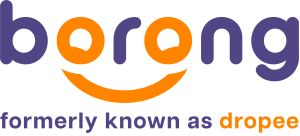In the past, many business owners believed that it is more advantageous to invest in traditional, on-premises software rather than cloud-hosted applications (SaaS). And they are right given the fact that many years ago, cloud services were not properly managed and there was practically a buffet line of weaknesses that hackers could exploit. It’s a good thing that lots have changed since then.
From security reasons to migration and controls, here’s a list of things that SaaS companies have improved over the years.
Customisation on Modification & Control
It is believed that you can do more customisation with an installed software versus SaaS. This idea is not completely false but it comes with caveats. If you opt for an installed software today, you will need to invest in a professional IT department to deliver the customisation.
Such investment is a high opportunity cost for non-tech savvy business owners to manage access privileges, data policies, application security, and many more. Sure, you can hire or partner with an external software house to manage this but it comes with a risk of the software house not understanding your industry and/or company needs thoroughly.

Today, there are many SaaS solutions in the market that offer customisation packages in order to tailor them to their customers’ needs. And because these SaaS companies exist to provide solutions for your business, they have dedicated their energy and focus to constantly provide the best upgrades and features periodically. This means they are experts in your industry and it is their job to create solutions suitable for your business.
Mini nutshell:
- Many modern-day SaaS companies provide customised solutions as an option
- Save costs on hiring an IT professional team and manage them; this is especially troublesome for non-tech savvy companies.
- Eliminate risk of dealing with outsource IT companies that aren’t specialised in understanding your business and industry.
Security
Back in the days, cloud-based SaaS companies are susceptible to many hackers and data breach. Fortunately, SaaS providers have learnt and grown from these mistakes.
When you subscribe to SaaS today, the software provided is already secured on many fronts such as having strong firewalls, state-of-the-art intrusion prevention systems, antivirus software, and strict access controls. This protects your business from threats like brute-force attacks, denial-of-service, and malware.
SaaS companies also host their solution in high security facilities that prevents cyber criminals from accessing your company’s sensitive data and info.
In contrast, installed on-premise software is not as secure as one would hope. Companies without an IT department often don’t invest in anything more than antivirus software and a door lock, leaving their system more vulnerable to attacks.
In fact, a study has shown that companies with an installed on-premise software experienced 61 attacks per year, in comparison to 27 attacks for companies opted for cloud SaaS solutions.
Mini nutshell:
- SaaS companies’ security has significantly tightened over the years.
- Companies with installed softwares experience more cyber-attacks than opting for cloud SaaS solutions.
Subscribing to SaaS is more costly than owning installed softwares
This may be true in the past especially when SaaS companies don’t offer a wider range and flexible subscription packages to their customers. However, modern day SaaS have customisable packages that many companies can opt in and out of easily.
You can also upgrade and downgrade your SaaS solution anytime you want – and this gives amazing flexibility to select the right subscription package for your business to cater to changing times.
Also, did you know that the average cost per user for an ERP solution is $7,200? And when you’ve factored in the number of users, training and other added costs, you’ll find the implementation can cost anything between $150,000 and $750,000 for a mid-sized business. This is especially painful if you’ve opted for an on-site installed / licensing software as you will need to bear all these costs upfront.
Mini nutshell:
- Modern-day SaaS provides a wider range of flexible and customisable packages that are cost-friendly to your business.
- Opting for installed on-site solutions will require your company to pay all the costs upfront, of which is not favourable to cash-tight businesses.
Migrating Data
It’s a common worry that hosting data off-site can be troublesome if you decide to switch SaaS providers and need to migrate the data to a new system. While it is not the easiest experience, the good news is that most SaaS solutions have common data sets that allow you to migrate raw data files from one SaaS provider to another in a seamless way.

Also, many SaaS providers have highly trained support teams to assist you in your data migration. Our best advice is to switch to SaaS providers that give great customer support – this will give you better assurance on a successful data migration.
Mini nutshell:
- Many SaaS solutions have similar data sets so migration from one provider to another shouldn’t be too much of a problem.
- If switching, always better to opt for SaaS providers that come with exceptional customer support teams.
Here at Dropee, we provide B2B eCommerce software solutions to businesses looking for modern and flexible CRM and sales reps tools to manage your B2B customers better. Learn more about how you can build an even stronger B2B customer experience by requesting for a demo.




1 Comment
Part 2: Solving B2B Challenges with E-commerce Solutions - Dropee · October 5, 2020 at 8:34 am
[…] deliver on integration and maintenance. By contrast, e-commerce solutions software, also known as SaaS or Software-as-a-Service refers to software that is cloud-hosted, that you can “rent” for a fee and access via the […]